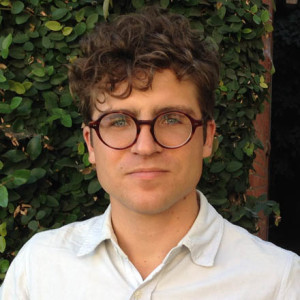SAS Recognizes “Best Conference Paper Award” Recipients

Erin Piñon
The Society for Armenian Studies is pleased to announce the recipients of its 2017 “Best Conference Paper Award.” Recognized are co-winners Erin Piñon for her paper “‘Get My Good Side’: Triumphant Images of Defeat in Early Modern Armenia,” Earnestine Qiu for her paper “Is White Divine? A Reevaluation of the ‘Armeno-Crimean’ Lives of the Desert Fathers (Jerusalem, Armenian Patriarchate, MS 285),” and Jesse Siragan Arlen for his paper “In Creation of Readerly Taste: Paratextuality in the ‘Publishing Mission’ of Mkhit‘ar of Sebastia.”
The SAS Executive Council will award each of the winning recipients a monetary prize and one year of SAS membership. Each year SAS selects the “Best Conference Paper” presented by a graduate student at a conference in a calendar year. A committee appointed by the Executive Council judges the papers.
Erin Piñon first became interested in Armenian art history as an undergraduate at Tufts University (Boston), which offers one of the few programs worldwide specializing in Armenian art. She continued her graduate studies at Southern Methodist University (Dallas). She lived in Yerevan as a U.S. Fulbright Student Researcher for the 2016-2017 academic year and a visiting professor at the American University of Armenia. She has worked at several museums as a research assistant, including the Dallas Museum of Art and the Armenian Museum of America in Watertown, Massachusetts. She is currently a Ph.D. student in the Department of Art and Archeology at Princeton University.
Piñon delivered her paper at the Sixteenth Century Studies Conference (Milwaukee, October 26-29, 2017). Her paper analyzed the visual representation of the battle of Avarayr in the work of artist Karapet Berkretsi from the school of Vaspurakan in the last decades of the fifteenth century. His work presents an idealized, manipulated sequence of events, which does not leave Armenian heroism and spiritual victory to chance, but instead uses vision to make it a statistical probability. Piñon argued that the work by this artist “is a clever construction of innovative iconography that could have only been birthed from early modern Vaspurakan.”
The Vaspurakan School expanded the iconographical schema of Armenian illumination to include secular scenes. It was both a reflection on the past and the flexibility of the scriptorium that afforded artists the opportunity to execute such scenes, extending and revising their history in order to ensure a national narrative (of a stateless nation) refocused on the living memory of Armenian bravery, rather than defeat. After receiving the prize, she noted that “the sophisticated objects penned, painted, and performed in early modern Vaspurakan (and beyond) are understudied pieces of Armenian visual and material culture and complex deposits of memory and devotion.”

Earnestine Qiu
Qiu received her B.A. in Linguistics and Art History from Rutgers University. She spent two years in social work before returning to the humanities and has since interned at the Morgan Library & Museum, the International Center of Medieval Art, and the Metropolitan Museum of Art. She currently is in the graduate program at the Department of Art and Art History of Tufts University. Her interests lie in Byzantine architecture and monasticism. “I am honored and thrilled to have received this award,” she stated. “It is an exciting time for Armenian studies and I look forward to continuing my research.”
Qiu delivered her paper at the Byzantine Studies Conference (October 4-6, 2017, San Antonio, Texas). Her paper dealt with an illustrated Armenian version of the Lives of the Desert Fathers, dated to 1430 and now held in the collection of the Armenian Patriarchate of Jerusalem with the shelf mark 285. The manuscript was produced in the trade center of Genoese Kaffa (present-day Feodosia), a critical commercial port on the Black Sea. This paper explores the political and theological context of the manuscript. In particular the author sought to strike a new line of interpretation based on the colophon, in which the author and scribe, Thaddeus Avraments‘, offers precious insight into his working practices, his intentions for the images and the texts, and the welfare of the monastery in which he lived and for which the manuscript was made.

Jesse Arlen
Jesse Siragan Arlen holds a B.A. degree in Linguistics from UCLA and two M.A. degrees in Historical Theology from Wheaton College and Early Christian Studies from University of Notre Dame. He is currently a Ph.D. student at the Near Eastern Languages and Cultures Department of UCLA. His research pertains to medieval literature and intellectual history, with a particular focus on asceticism, mysticism, and education. He is also a published writer of prose and poetry in Western Armenian. “I am honored and grateful to the SAS selection committee for choosing my paper for this award.” he noted. “I know there are many worthy graduate students conducting research in Armenian Studies.”
Arlen delivered his paper at the conference “Confessionalization and Reform: The Mkhit‘arist Enterprise from Constantinople to Venice, Trieste and Vienna,” held at UCLA (December 16-17, 2017). He focused on the understanding of Mkhit’ar of Sebastia’s publishing mission by examining the relationship between him and his readers. He showed how Mkhit’ar marshalled various paratextual means to influence the reception of his books. Through the use of introductory poems, illustrations and engaging games, Mkhit‘ar worked on the perceptions of his readers, even before they came to the actual text of the volume itself. This had at least three functional goals: first, ensuring that their intellectual study remained ancillary and subservient to their higher, spiritual mission; second, communicating to them their role both as Armenian Catholic monks and also as those who have inherited and will continue Mesrob Mashtots’ and his circle’s fifth-century mission; third, imposing a certain posture of deference towards the authority of Mkhit‘ar. All three of these effects fostered the production of a taste that aligned with Mkhit‘ar’s mission.
The Society of Armenian Studies is an international body, composed of scholars and students, whose aims are to promote the study of Armenian culture and society, including history, language, literature, and social, political, and economic questions; to facilitate the exchange of scholarly information pertaining to Armenian studies around the world; and to sponsor panels and conferences on Armenian studies.
For membership information or more information on the Society for Armenian Studies, please visit the SAS website at societyforarmenianstudies.com.







